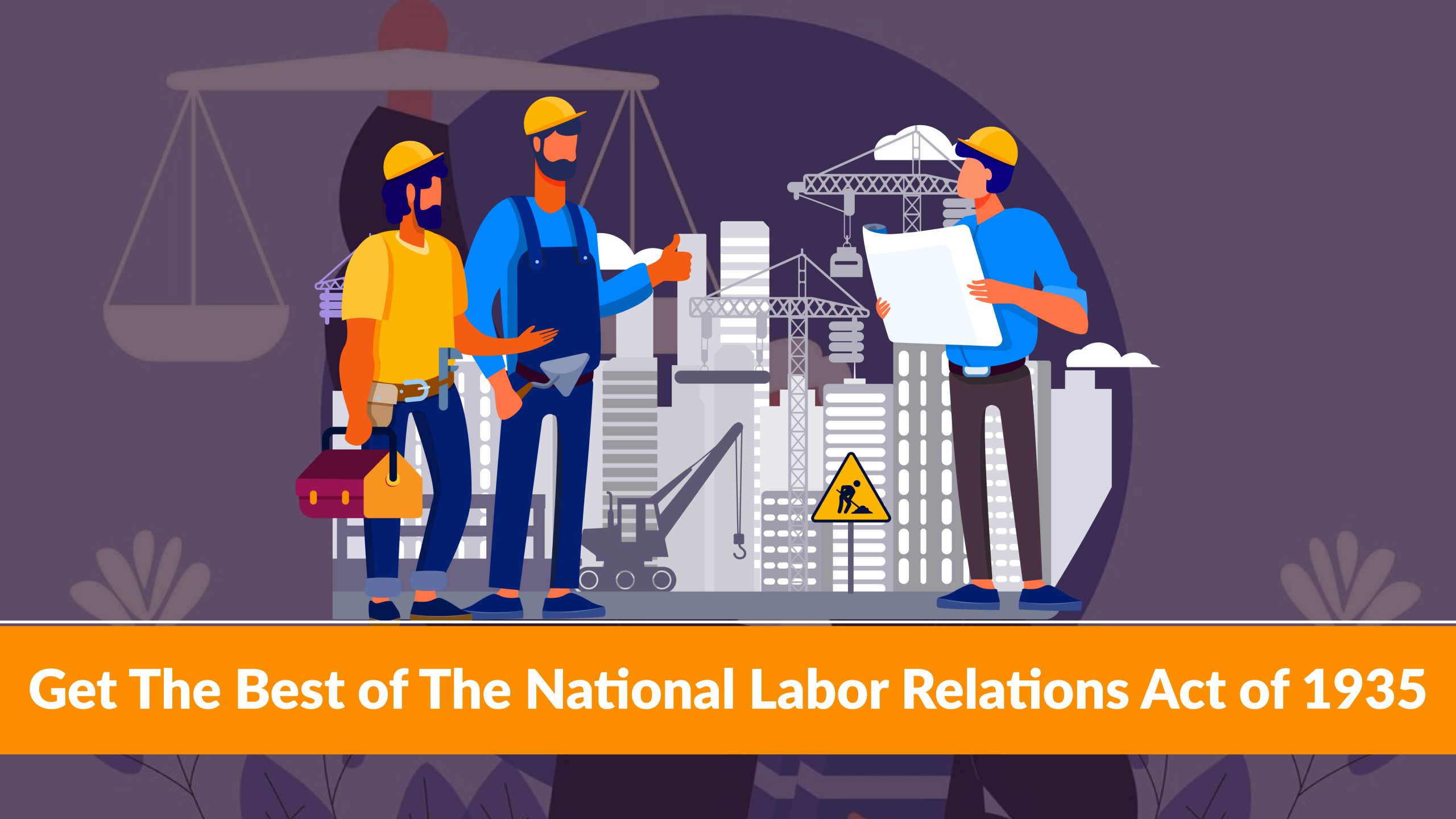
Federal state has served their citizens with various suggestive regulatory bodies and laws to maintain a pact of harmony in their territory. The federal government has covered every possible domain of concern, and a systematic working structure has been paved for the convenience of the public. Also, this massive system of functioning sets a clear path for the employees to cherish a systematic and structured routine. This wholesome system determines whether the target audience has been managed efficiently or not. This blog navigates through the National Labor Relations Act of 1935, how it has shaped workplace cultures, and where it critically stands today.
After the dismissal of the National Industrial Recovery Act in 1934, the National Labor Relations Act was introduced on 5 July 1935 by then-President Franklin Roosevelt. Under the rule of Congress, this act was enacted. The following act is also identified as the Wagner Act of 1935, named after Senator Robert R. Wagner of New York. The act guarantees employees ‘the right to self-organization, to form, join, or assist labor union organizations, to collectively bargain through a representative medium they’ve chosen, and to engage in concerted activities like collective bargaining or other mutual aid or protection priorities. The National Labor Relations Act Board ensures the act’s enforcement and maintenance status. The NLRA applies to every employer from interstate commerce except airlines, railroads, agriculture, and government. The NLRA attained constitutional status after being upheld by the United States Supreme Court during NLRB versus Jones & Laughlin Steel Corp. in 1937. The act’s primary purpose is to protect the rights of employees and employers, encourage the phenomenon of collective bargaining, and curtail certain private-sector labor and management practices that could generally affect the general welfare of the workers, businesses, and the US economy.
What is the “Right to Strike”?
Right to strike reflects on holding or organizing concerted activities to highlight their perspective, notifications, or demands in a group or from a group to a rigid body. Concerted activities could be defined as mass meetings, strikes, or protests by employers emphasizing certain collective bargaining or mutual interests or protection purposes. The lawfulness and unlawfulness of a strike depend on factors like the objective behind the strike, timing, and the method of conduct of the strikers. These factors are quite tricky to determine; NLRB could handle the task of deciphering the motive behind such strikes.
Unlawful strikes could lead to severe consequences like reinstatement and back pay. The lawfulness of strikes could be categorized into two distinctive categories, economic strikes, and unfair labor practice strikes. Economic strikes could be an upheaval after the delayed or partial payroll practices from the employer’s end. Unfair labor practices could be defined as certain discriminatory events identified by employees, and the medium of address chosen is strike here. Suppose the NLRB finds that strikers who have participated in economic issues or unfair labor practices strikes are recognized putting unconditional requests for reinstatement have been unlawfully denied reinstatement by their employer. In that case, the Board may reward such strikers backpay starting when they’re expected to be reinstated.
Right of employees under the act
Section 7 of this act determines that employees shall have the right to self-organization, to join or assist labor organizations, to bargain collectively through a representative of their choosing, and to engage in other concerted activities for collective bargaining or other mutual aid or protection, or shall have the right to refrain from any or all such activities except to the extent that such right may be affected by an agreement requiring membership in a labor organization as a condition of employment as authorized.
How does this law affect an organization?
The organization gets affected to the core when employees decide to strike against their representative employers or organizations. Employers are the identifiable face of the organizations. Employees seek to get their questions answered through employers for such means. Employers act as a medium of communication between the employers and the organization. The position of an organization becomes quite fragile in such situations. The valid classification of strike purpose decides the stand of organizations. The approach of an organization depends on the requests primarily. According to NLRB, the legitimate bargaining unit is a group of two or more employees who share a community of interest and may reasonably be grouped for collective bargaining
What do exempt employees mean by the law?
Exempted employees could be defined as employees who aren’t categorized as a striker for any economic strike or unfair labor practices strike. Exempted employees under the law are:
- Public sector employees such as employees of state, federal, and local governments and their sub-division.
- Agricultural and domestic workers,
- Independent contractors,
- Workers employed by parents or spouses,
- Employees of air and rail carriers categorized under Railway Labor Act,
- and lastly, supervisors that have been discriminated against for refusing to comply with NLRB regulations.
Conclusion
The National Labor Relations Act also known as is a fundamental right safeguarding the rights of employers working in organizations located in federal territory. This Labor Fundamental Act allows employees to address their concern or request in a collective manner. The pact of relationship between the organization and employees becomes quite sensitive when employees strikes collectively. NLRB acts as a regulatory body who looks into the proper functioning of NLRA. NLRB has set a prominent bargaining unit, that is, a group of two or more employees



